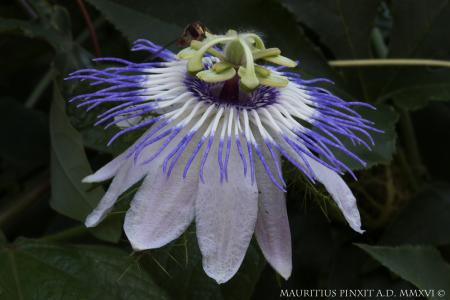
SUBGENUS: passiflora
SUPERSECTION: stipulata
SECTION: dysosmia
GEOGRAPHICAL DISTRIBUTION OR ORIGIN:
Belize (British Honduras).
MINIMUM TEMPERATURE: 5 °C
IDEAL MINIMUM TEMPERATURE: 10 °C
ETYMOLOGY: Dedicated to the German botanist Ignatz Urban (1848 - 1931).
He was director of some German botanical gardens specialist in the flora of the West Indies. He is the discoverer of Passiflora tulae.
DESCRIPTION:
Its membership of the section Dysosmia of the subgenus Stipulata becomes obvious as soon one smells the aroma of its leaves. They are very different from those of P. foetida (a typical species of the section), since they are leathery, whole and lanceolate in shape. However, the slight hairiness covering the blade, the petiole and stipules calls to mind that of related species. The flowers are also quite similar to those of the more widespread and well-known P. foetida.
Like all plants belonging to this section, it has a rapid, lively growth, with early flowering. All this represents an advantage, as it lends itself to being reproduced from seed without having to wait a few years for flowering to occur. The seeds remain viable for a long time, certainly for at least 3-4 years, and germination is usually quick.
It can produce flowers of different colours, which makes it interesting. The specimen I owned blossomed for the first time in a beautiful cyclamen pink, intense and decisive; after a period of rest, at the beginning of autumn, it then flowered again, this time a very light pink, almost white.
The flowers have a diameter of about 5 cm and are enriched by a beautiful corona with filaments that are white in their initial half while sharing the same intense pink of the sepals and petals in their latter half. Small contrasting bands delimit the two differently coloured areas.
The fruits are red and covered with a subtle down.
It is hardy
enough to acclimatise in the more temperate Italian regions, such as the
Ligurian Riviera and the south.